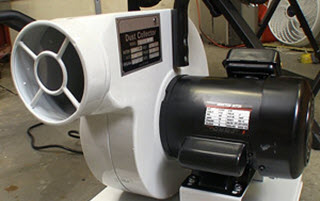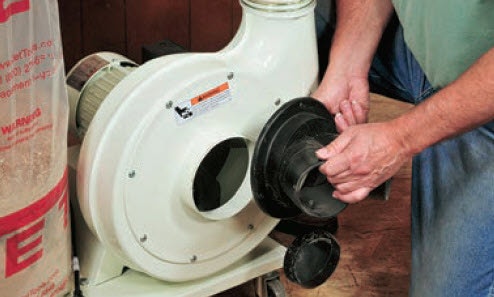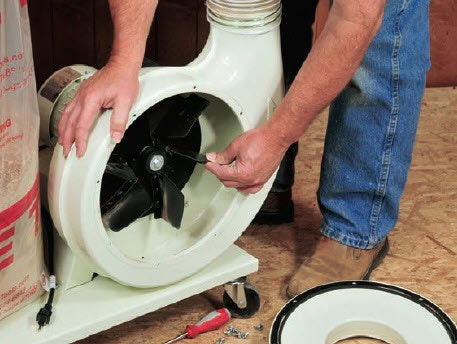Easy Dust Collector Maintenance

Of all the tools in your shop, the dust collector takes some of the hardest beating, regular maintenance including removing the ductwork is advised. Maintaining most of the machines in your shop — table saws, planers, band saws — means keeping them running at peak performance, so they’ll do precise work.
A well maintained dust collector won’t make your cuts more accurate, but it will help keep your shop cleaner and safer and, more importantly, help prevent damage to your respiratory system.
Whether you own a portable chip collector or have a full central system, most collector maintenance is very straightforward: Empty the unit’s bins/bags regularly and keep the unit’s filters reasonably clean and you’re halfway there.

Other regular maintenance steps, including checking the fan, vacuuming the electrical boxes and making sure hose and ductwork connections are tight, will assure that your collector will operate at peak performance for years to come.
Check the Fan
Just blowing out the shop vacuum's fan isn't usually enough, do visual and tactile inspection of the blades to check for any damage. If you have a single-stage dust collector where dust and chips pass directly through the fan before being deposited in a bin or bag, it’s important to check the fan occasionally for damage. Early portable collectors and “economy” models were often fitted with plastic-bladed fans that are very prone to damage from impact with larger chips, screws and nails or small cutoffs.

Even the metal-bladed fans found on better-quality collectors may be damaged from contact with larger debris that’s occasionally sucked up accidentally. To check out your collector’s fan, unplug the collector, then remove any ductwork or fittings that are attached to the flange on the intake side of the fan. There’s usually a large enough opening to allow viewing the bladed fan inside; if not, unscrew and remove the fan’s intake shroud. Use a flashlight, if necessary, and carefully inspect the entire surface of the fan. Make sure that none of the fan’s blades have been cracked or broken. Metal blades fabricated from sheet steel that are bent can usually be straightened out, but a damaged fan made from cast plastic or aluminum will need to be replaced.
Keep the inspiration coming!
Subscribe to our newsletter for more woodworking tips and tricks